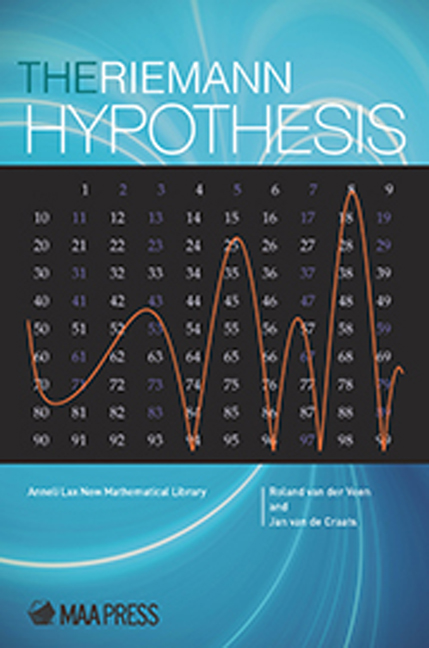Book contents
- Frontmatter
- Dedication
- Anneli Lax New Mathematical Library
- Contents
- Preface
- 1 Prime numbers
- 2 The zeta function
- 3 The Riemann hypothesis
- 4 Primes and the Riemann hypothesis
- Appendix A Why big primes are useful
- Appendix B Computer support
- Appendix C Further reading and internet surfing
- Appendix D Solutions to the exercises
- Index
1 - Prime numbers
- Frontmatter
- Dedication
- Anneli Lax New Mathematical Library
- Contents
- Preface
- 1 Prime numbers
- 2 The zeta function
- 3 The Riemann hypothesis
- 4 Primes and the Riemann hypothesis
- Appendix A Why big primes are useful
- Appendix B Computer support
- Appendix C Further reading and internet surfing
- Appendix D Solutions to the exercises
- Index
Summary
How are the prime numbers distributed among the other numbers? How many primes are there? What is the number of primes of one hundred digits? Of one thousand digits? These questions were the starting point of a seminal paper by Bernhard Riemann (1826–1866) written in 1859. As an aside in his article Riemann formulated his now famous hypothesis that so far nobody has come close to proving.
In this first chapter you will get to know the primes, two distinct functions that count primes, and various approximations of these functions. The natural logarithm plays an important role. At the end of the chapter the Riemann hypothesis itself will make its first appearance.
Primes as elementary building blocks
Counting is more than twenty thousand years old. Long before written language was invented, people already were tallying with notches on pieces of bone1. Counting and arithmetic are arguably the oldest concepts in mathematics and yet numbers still exhibit mysterious patterns that we do not fully understand. For example, if you ask how numbers can be constructed by multiplication alone, you quickly hit upon one of the biggest riddles of mathematics.
Using a single number as a building block, you can never construct all numbers by multiplication only. Take 2 for example. All you can get is 2 itself, 2 × 2 = 4, 2 × 2 × 2 = 8, 16, 32, … and the other powers of 2. If you add 3 as a building block, then you can also construct 3, 2 × 3 = 6, 9, 12, …. However, the number 5 is still out of reach. By adding 5 to the list it is possible to construct all marked numbers in table 1.1.
Adding 7, the first number not yet constructed, as a building block, more numbers come within reach, but 11 and 13 still elude us. Will this process finally come to an end, or are we forced to add ever more building blocks to construct all numbers by multiplication?
The ancient Greeks already knew the answer to this question: there is no end to the list of building blocks.
- Type
- Chapter
- Information
- The Riemann Hypothesis , pp. 1 - 20Publisher: Mathematical Association of AmericaPrint publication year: 2016



